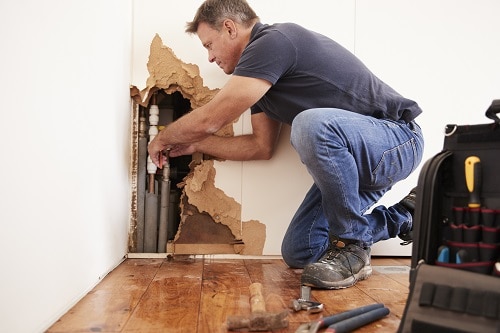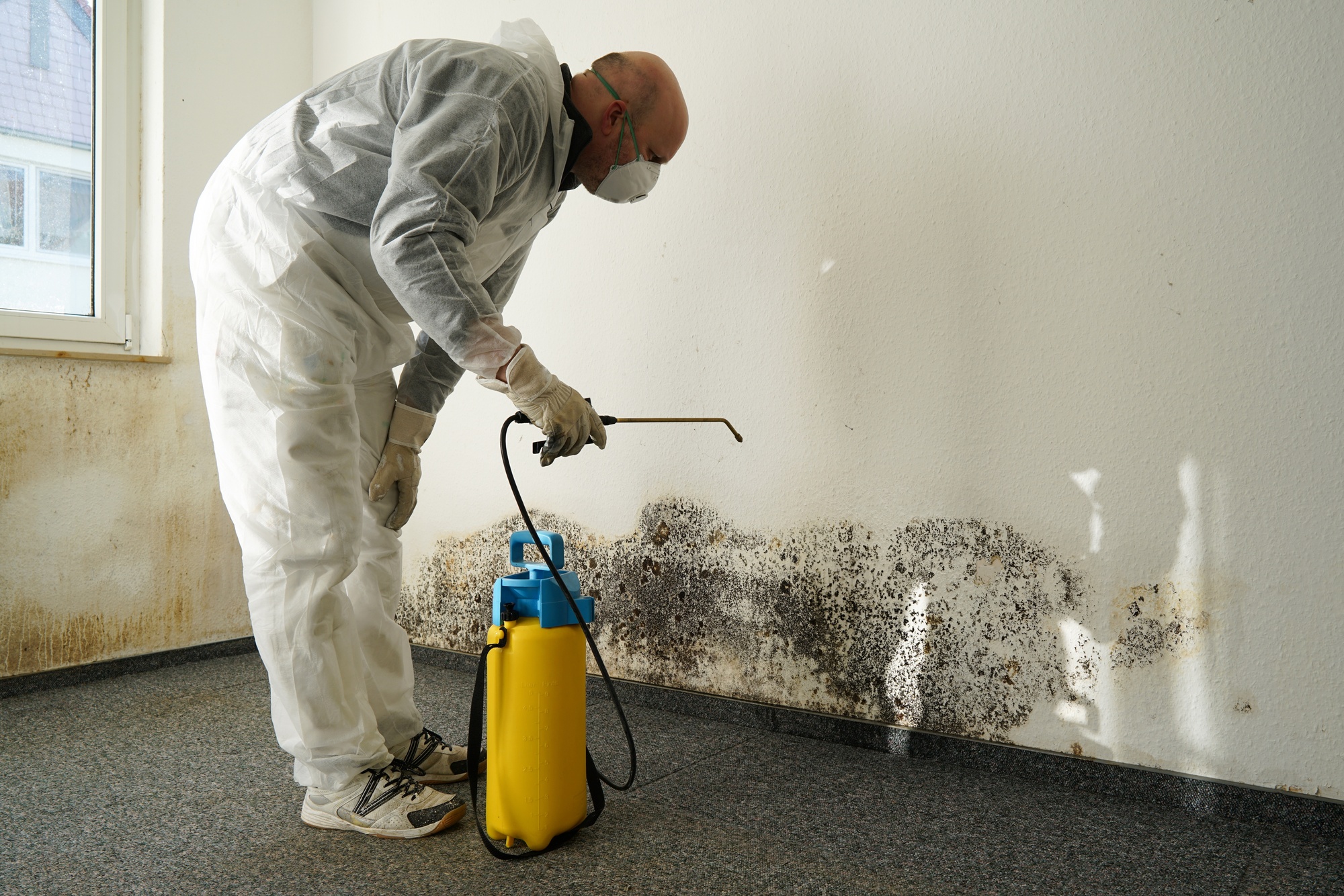Top Tips for Effective Water Damage Restoration: Protect Your Residential Or Commercial Property Today
Water damage can strike all of a sudden, triggering considerable disruption and potential hazards. Reliable restoration calls for an organized strategy to lessen additional damage. From assessing the damage to implementing preventative procedures, each step plays a vital function in guarding home. Understanding these techniques can make all the difference in the consequences of a water-related crisis. What crucial actions should be focused on to ensure thorough protection?
Analyze the Damage Quickly

Shut down the Water Supply
Shutting off the supply of water is an essential action in avoiding additional damage throughout a water-related case. When a leakage or flooding takes place, instant action is vital to decrease the degree of the damage. Locating the major water shut-off shutoff should be a priority. This valve is typically located near the water meter or where the water line goes into the residential property. As soon as located, transforming the valve clockwise will certainly quit the flow of water. In cases where the primary valve is hard to reach, private shut-off shutoffs for appliances may also be utilized. Promptly closing off the water system not just safeguards the building from added damage yet also facilitates the succeeding restoration procedure, guaranteeing that healing initiatives can start immediately.
Remove Excess Water Immediately
Removing excess water immediately is important for decreasing damage and preventing mold and mildew development in affected areas. The longer water continues to be touching materials such as drywall, wood, and insulation, the higher the risk of architectural damage and the growth of mold. Homeowners need to act swiftly to assess the scenario and utilize suitable tools, such as damp vacuum cleaners or pumps, to extract standing water efficiently. If the volume of water is substantial, calling expert restoration solutions might be essential, as they can provide specific equipment and know-how. Additionally, eliminating furniture and possessions from the damaged area can aid to decrease damage and promote the total restoration process. Prompt activity not only safeguards home yet also help in a smoother recovery journey.
Dry Out the Affected Location
After removing excess water, it is important to dry the afflicted location extensively. This involves eliminating any type of standing water and enhancing air flow to assist in dissipation. Efficient drying out will certainly assist stop mold and mildew growth and more damage.
Remove Standing Water
Swiftly dealing with standing water is important for efficient water damage restoration. The existence of stagnant water can lead to more building damage and develop a setting helpful to mold and mildew growth. To reduce these risks, it is important to eliminate standing water as swiftly as feasible (Flood Cleanup Services). This process normally involves making use of submersible pumps, damp vacuum cleaners, or specialized extraction devices. Experts recommend evaluating the deepness and extent of the water prior to picking the suitable method for elimination. Safety safety measures should likewise be taken, consisting of using safety gear and ensuring power is shut off in influenced areas. As soon as the standing water is successfully removed, the drying out process can start, even more securing the residential property from ongoing damage
Boost Air Circulation

Inspect for Mold Development
Mold and mildew development is a severe worry adhering to water damage, as it can bring about wellness concerns and architectural deterioration. After any type of flooding or leaks, it is necessary to perform a thorough examination of the influenced locations. This consists of monitoring covert spaces such as behind walls, under carpetings, and in cellars or attics where moisture might remain. Signs of mold include a mildewy odor, discoloration on surface areas, or visible development. Homeowner need to use protective equipment when checking, as mold and mildew spores can present health and wellness risks. Water Damage Restoration. If mold and mildew is found, it is crucial to resolve it immediately, as postponing remediation can aggravate the issue and increase the risk of serious health problems for passengers. Early intervention is vital to efficient mold administration
Repair Work and Restore Broken Structures
When resolving water damage, it is necessary to very first assess the architectural stability of the affected areas (Residential Water Damage Repair). This analysis helps determine possible dangers and notifies the essential repair work techniques. Engaging specialist restoration services assures that the restoration process is performed safely and successfully
Evaluate Structural Integrity First
Prior to launching any kind of water damage restoration, it is necessary to examine the architectural integrity of the damaged area. This examination aids identify any type of compromised elements, such as structures, light beams, or walls, which might pose security dangers. Examining for indications of bending, fracturing, or mold and mildew growth is crucial, as these signs can expose underlying damage that calls for prompt attention. Furthermore, comprehending the degree of the damage can lead restoration initiatives and establish whether repairs are possible or if replacement is needed. It is very important to record findings thoroughly, as this information can be important for insurance coverage cases or future referral. Focusing on structural assessment guarantees that restoration initiatives continue securely and successfully, eventually safeguarding the residential property and its owners.

Usage Professional Restoration Services
Making use of expert restoration solutions is crucial for effectively fixing and bring back broken structures after water cases. These professionals have the needed training, tools, and experience to reduce and evaluate water damage extensively. They can identify surprise issues, such as mold and mildew growth and architectural weak points, that may not be instantly noticeable. Specialist solutions also employ sophisticated drying out techniques and devices, ensuring that all moisture is gotten rid of to avoid more damage. Additionally, they abide by sector standards and guidelines, making certain that the restoration process is efficient and safe. By involving restoration specialists, building owners can accelerate recovery, decrease long-term damage, and ultimately secure their financial investment - Flood Cleanup Services. This proactive method is necessary in keeping the integrity and security of afflicted structures
Avoid Future Water Damage
To efficiently avoid future water damage, property owners should embrace an aggressive strategy to maintenance and repair work. Routine assessment of gutters, downspouts, and roofing systems is vital; blocked rain gutters can result in water overflow and roof leaks. Furthermore, inspecting for leakages in plumbing fixtures and devices can thwart potential damage. Homeowners must also consider mounting sump pumps in cellars or low-lying areas to manage water buildup. Securing cracks in structures and making sure proper water drainage around the home are crucial action in guarding against water intrusion. In addition, preserving useful reference humidity degrees with dehumidifiers can avoid mold and mildew development. By implementing these safety nets, property owners can greatly lower the danger of water damage and protect their building for the long term.
When a water damage event takes place, it is vital to assess the damage promptly to mitigate additional concerns. Removing excess water promptly is necessary for decreasing damage and protecting against mold growth in impacted areas. Swiftly resolving standing water is essential for effective water damage restoration. The visibility of stationary water can lead to further residential or commercial property damage and produce a setting conducive to mold development. Prior to initiating any type of water damage restoration, it is vital to examine the architectural integrity of the afflicted area.